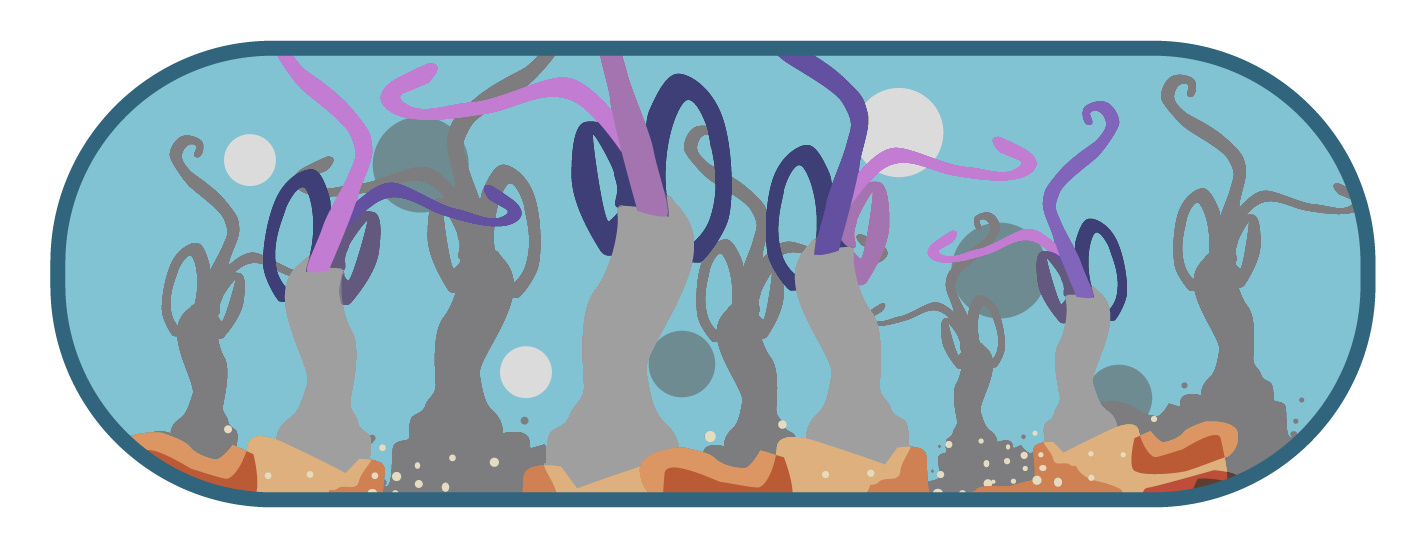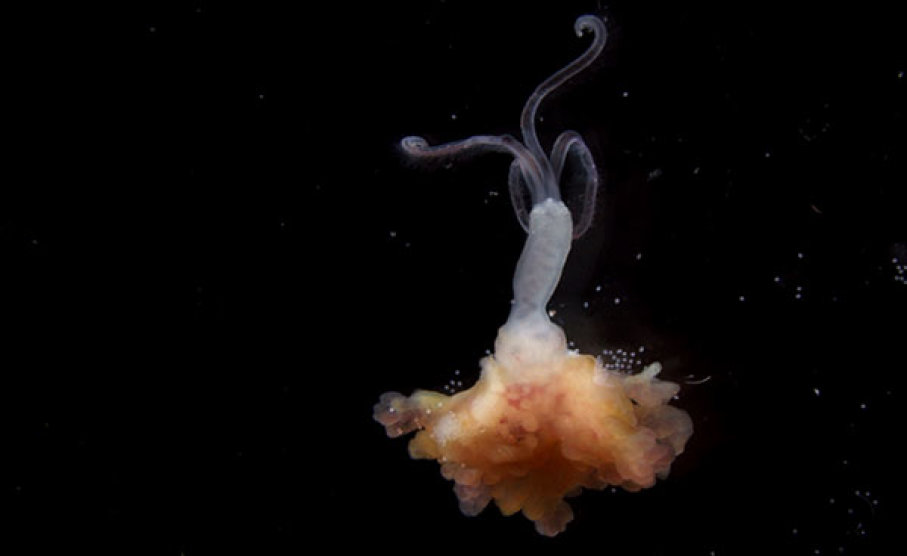
In the depth of the ocean, you chew on what you can! We examine the curious case of the Osedax worm for the 11th day of the Microbial Advent Calendar! Many marine worms have established symbioses with some type of bacteria, the most common association is between worms and sulfur-oxidizing bacteria. Sulfur always gives you a little extra energy in the right habitat. Although today’s worm is related to a whole clade of worms in such associations, Osedax established an association to get energy from something completely different: BONES!
It was first found colonizing a whale fall, a nice word for a dead whale on the seafloor, somewhere at 3 km depth in Monterey Bay in 2004 (the paper is here). Those worms are among the best collection of deep-sea curiosities, they are mouthless and gutless worm species but they somehow feed off the bone and there is a large skew in size between males and females. The males are so small that they accumulate in large numbers — up to 100 — in the gelatinous sheet that covers the female Osedax‘s body and oviduct.

Image: Osedax japonicus, an adult female exposed from a bone.
(Norio Miyamoto/Naturwissenschaften)
So, how are those worms eating the bones? How are bacteria linked to this? Well in the bottom part of the worm, the root that is actually anchored in the bone, there are a lot of bacteriocyte-like structures housing bacteria, from the Oceanospirillales order. The root is actually pumping collagen and cholesterol from the bone and transferring the compounds into the bacteria that can metabolize them into something the worm can use. This nutritional symbiosis is the key to the worm’s success. Interestingly, when some authors looked at eggs and larvae, they were lacking the symbiotic bacteria. Meaning that the worms are capable of recruiting the right type bacteria locally next to a whale carcass!
You can find all the cool papers about this story here. The first symbiosis paper is here, they have lovely EM pictures. And more recent ones here and here, where different authors had a look into the genome and tried to understand the mechanism behind bone digestion.
And finally, to give proper credit to a better summary, have a read of the excellent post here on Small Things Considered (Which is also a fantastic blog if you didn’t know about it).